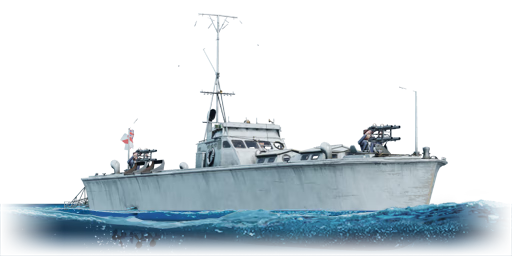

The MTB-1 was a motor torpedo boat designed for the Royal Navy by the British Power Boat Company in 1935. The class was conceived after the realisation that the RN was lagging behind in terms of light torpedo boats compared to their counterparts in Germany and Italy. In total, 30 boats of the MTB-1 design were built.
The first series of the MTB-1, designated MTB-1(1), featured two quadruple 7.72 mm Lewis machine gun mounts, one at the bow and one at the stern. Following live sea trials in June 1937, the MTB-1 proved to be a reliable design, though certain flaws were noted. The results were later used in developing the second series of the MTB-1 built in Canada, designated MTB-1(2).
The MTB-1(1) was introduced in Update 1.83 "Masters of the Sea" as part of the fleet closed beta test. Decently fast and manoeuvrable, the MTB-1(1) carries a pair of underwhelming torpedoes and sports eight 7.72 mm Lewis MGs in total. While the Lewis MGs are capable of dealing a good amount of damage due to their sheer burst mass, they have a very short effective range of just 400 metres at best against typical PT boats. This means the boat is forced to get up close to be able to deal damage. However, the boat is held back by a combination of low survivability and an extremely long reload time for the Lewis MGs.
| Belt | Belt filling | Armor penetration (mm) at a distance: | |||||
|---|---|---|---|---|---|---|---|
| 10 m | 100 m | 500 m | 1000 m | 1500 m | 2000 m | ||
| AP/T/AP/T | 10 | 9 | 8 | 7 | 6 | 5 | |
| AP/AP/AP/T | 10 | 9 | 8 | 7 | 6 | 5 | |
| IT/IT/IT/IT | 10 | 9 | 7 | 6 | 5 | 5 | |
4 × Mk.VII depth charge











Seakeeping | |
|---|---|
Unsinkability | |
|---|---|
Firepower | |
|---|---|